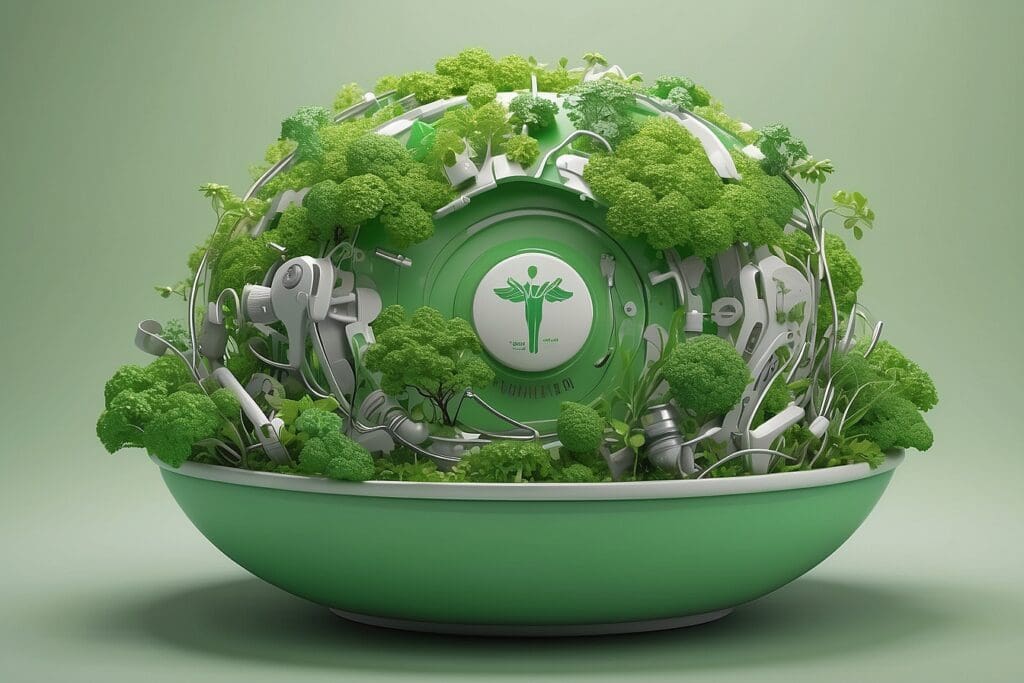Many of us tend to over look the environmental impacts or threats within the healthcare industry as we depend on it for our well-being. I was shocked when I found out how much unnecessary pollution goes into our Nation’s healing process. An organization working to combat many of these issues, Health Care Without Harm, offers some pretty alarming statistics: The U.S. EPA ranks the health care sector as the fourth-largest source of mercury air emissions due to their contribution to medical waste incinerators.1 The EPA has moved forward and published a manual specific to the healthcare sector and how it can reduce its mercury use: http://www.epa.gov/glnpo/bnsdocs/merchealth/index.html. This manual is part of a more expansive set of EPA resources for healthcare providers to use in reducing mercury use, which can found at: http://www.epa.gov/mercury/healthcare.htm.

Hospitals generate more than two million tons of waste each year. Computers, televisions, lab analyzers, EKG monitors and other types of electronic equipment used in hospitals every day contain many hazardous constituents – from lead in cathode ray tube (CRT) monitors to chlorinated plastics in cable wiring, brominated flame retardants in circuit boards and plastic enclosures, and mercury in LCD displays. The hazardous substances found in electronics have been linked to human health effects like cancer, birth defects, and hormone disruption.2 Fortunately, with continued environmental education and awareness, the healthcare industry is beginning to understand the undeniable link between human health and the environment. This understanding has given birth to a new movement within the healthcare sector: Green Health Care.
The Green Health Care movement began around 1996 after the US Environmental Protection Agency identified medical waste incinerators as the leading source of dioxin, one of the most potent carcinogens known. This dire statistic was a catalyst for 28 organizations to come together to form Health Care Without Harm (http://www.noharm.org/). Their mission is “to transform the health care sector worldwide, without compromising patient safety or care, so that it is ecologically sustainable and no longer a source of harm to public health and the environment.”3 In the past decade, Health Care Without Harm has grown to include over 473 organizations in 52 countries including governments, non-governmental organizations and mainstream health care institutions. Some of their most notable accomplishments include:
* Virtually eliminating the market for mercury-based medical equipment in the United States, and generating demand for safe alternatives.
* Closing thousands of medical waste incinerators and promoting safer technologies and waste management practices in the US and around the world.
* Creating new markets for safe and healthy products by leveraging the purchasing power of the health care industry.
* Initiating a Green Building program specifically geared to hospitals.
* Developing a Healthy Food project that is changing the way hospitals purchase food to support sustainable agricultural practices.
Public support, education, and advocacy continue to feed this movement. Already, the U.S. is leading the world in mercury phase-out in the healthcare sector. The American Nurses Association just recently approved a resolution to support healthy, sustainable food systems in the United States.4 Also, over 7,000 U.S. health care facilities have joined “Hospitals for a Healthy Environment” to implement a shared agenda of toxics reduction and environmental sustainability.5 Along with the outstanding work of Health Care Without Harm, other resources are becoming available to promote this greening process. The Teleosis Institute (http://www.teleosis.org/) offers training courses to healthcare professionals on the Green Health Care model as well as extensive online educational resources. The Institute has three specific goals directed toward promoting high quality, cost-effective, sustainable medical services benefiting underserved populations and the environment in which we live: 1) provide Education in the principles and practices of green healthcare; 2) provide a Forum for continued learning, discussion and collaboration on green healthcare practices and strategies for change; and 3) provide Tools for implementing green healthcare practices.6
In regards to the impact that building and construction make on human health and the environment in this sector, the Green Guide to Health Care (http://www.gghc.org/) has it covered. The Green Guide borrowed the LEED certification process to provide a thorough-and downloadable-“best practices” guide for healthy and sustainable building design, construction, and operations for the healthcare industry. If you keep your eyes open for Green Health Care, you will most likely find an example of it close to home. Human health and environmental protection can finally work together, as they have always been inextricably linked.
For more resources and information on Green Health Care, check out the Greeniacs Guide http://www.wordpress-837916-4114959.cloudwaysapps.com/GreeniacsGuides/Green_Health_Care_Guide.





